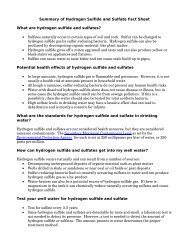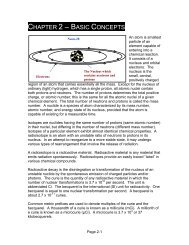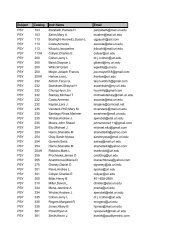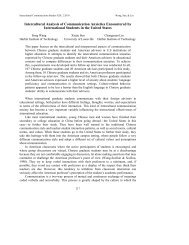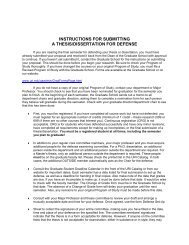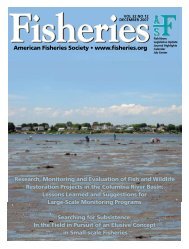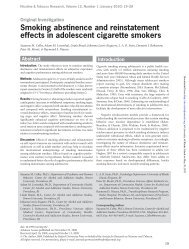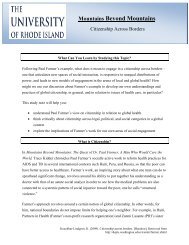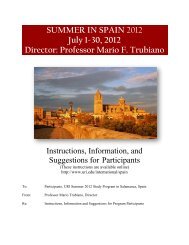Appendix A Standard Operating Procedures - University of Rhode ...
Appendix A Standard Operating Procedures - University of Rhode ...
Appendix A Standard Operating Procedures - University of Rhode ...
You also want an ePaper? Increase the reach of your titles
YUMPU automatically turns print PDFs into web optimized ePapers that Google loves.
<strong>Standard</strong> <strong>Operating</strong> Procedure 006<br />
Waste Autoclaving Procedure<br />
<strong>University</strong> <strong>of</strong> <strong>Rhode</strong> Island Watershed Watch<br />
1.0 PURPOSE AND DESCRIPTION<br />
Date:<br />
Revision:<br />
Author:<br />
08/08<br />
2<br />
Elizabeth<br />
Herron<br />
This procedure is for autoclaving used media plates (mTec, mE, and EIA) and IDEXX trays<br />
using either the autoclave in the basement <strong>of</strong> Woodward Hall or in the Kingston Coastal<br />
Institute.<br />
2.0 HEALTH AND SAFETY<br />
Used media plates constitute a biological hazard, therefore wear plastic gloves when handling<br />
the used media plates.<br />
Be aware that materials that have been autoclaved will be extremely hot when the cycle is<br />
completed. The media may still be liquid when removed from the autoclave. Spilling liquid<br />
media onto any part <strong>of</strong> the body will cause a burn. If this occurs bathe the effected body part<br />
under cool water for 5-10 minutes. Refer to SOP 001a – <strong>University</strong> Safety and Waste Handling<br />
Document. Wear insulated gloves when handling materials.<br />
3.0 AUTOCLAVE OPERATION<br />
3.1 Preparation<br />
Used plates and trays are stored in autoclavable plastic bags in the labeled red waste bin<br />
beneath the 35 °C incubator in room 019 <strong>of</strong> the Coastal Institute. The bags are autoclaved<br />
when they appear half full. Do not wait until the bag is completely full.<br />
3.2 Using Autoclave in the Kingston Coastal Institute Building<br />
1. Adjust the shelves <strong>of</strong> the autoclave if necessary. Ensure there is adequate volume in<br />
the tray to handle the number and volume <strong>of</strong> plates/trays.<br />
2. Wearing gloves, remove the half filled bag <strong>of</strong> plates/trays and place them in an autoclave<br />
tray.<br />
3. Ensure that the water reservoir is filled to the bottom <strong>of</strong> the safety value. If not, add<br />
deionized (DI) water, being sure not to immerse the safety valve.<br />
4. Plug the power cord in, and turn the main switch to START.<br />
5. Fill the autoclave with water by turning the multi-purpose value (always turn this valve<br />
clockwise) to FILL. The water should reach most <strong>of</strong> the width <strong>of</strong> the indicator channel at<br />
the front <strong>of</strong> the chamber. Turn the multi-purpose valve to STE to stop the flow <strong>of</strong> water<br />
and prepare the unit for sterilization.<br />
6. Make sure that maximum temperature recording thermometer is in the autoclave. The<br />
mercury should be shaken down below 100 °C.<br />
1 <strong>of</strong> 3<br />
Waste Autoclaving Procedure SOP 006<br />
S:\WW\awwword\LABPROC\all QAPPs\LABQAPPs\QAPP Rev5 -0609\SOPs\SOP 006WasteAutoclave.doc



